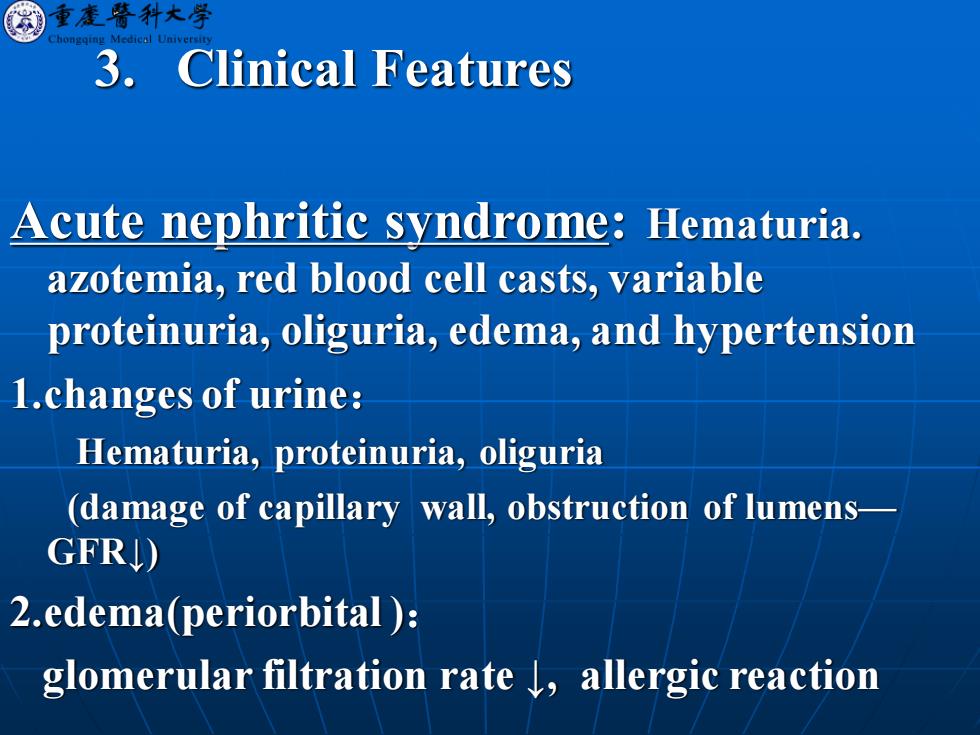
圈重麦晋行大学 3.Clinical Features Acute nephritic syndrome:Hematuria. azotemia,red blood cell casts,variable proteinuria,oliguria,edema,and hypertension 1.changes of urine: Hematuria,proteinuria,oliguria (damage of capillary wall,obstruction of lumens- GFR↓) 2.edema(periorbital ) glomerular filtration rate l,allergic reaction
3. Clinical Features Acute nephritic syndrome: Hematuria. azotemia, red blood cell casts, variable proteinuria, oliguria, edema, and hypertension 1.changes of urine: Hematuria, proteinuria, oliguria (damage of capillary wall, obstruction of lumens— GFR↓) 2.edema(periorbital ): glomerular filtration rate ↓, allergic reaction
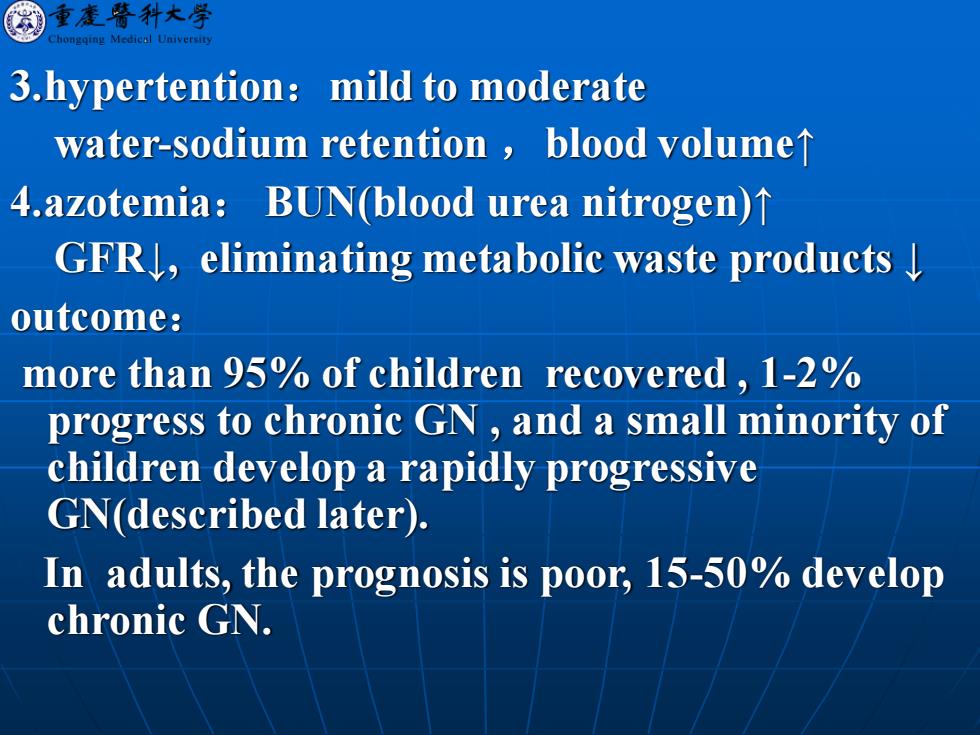
重蹇普科大星 3.hypertention:mild to moderate water-sodium retention,blood volume 4.azotemia:BUN(blood urea nitrogen) GFR,eliminating metabolic waste products outcome: more than 95%of children recovered 1-2% progress to chronic GN,and a small minority of children develop a rapidly progressive GN(described later). In adults,the prognosis is poor,15-50%develop chronic GN
3.hypertention:mild to moderate water-sodium retention ,blood volume↑ 4.azotemia: BUN(blood urea nitrogen)↑ GFR↓, eliminating metabolic waste products ↓ outcome: more than 95% of children recovered , 1-2% progress to chronic GN , and a small minority of children develop a rapidly progressive GN(described later). In adults, the prognosis is poor, 15-50% develop chronic GN
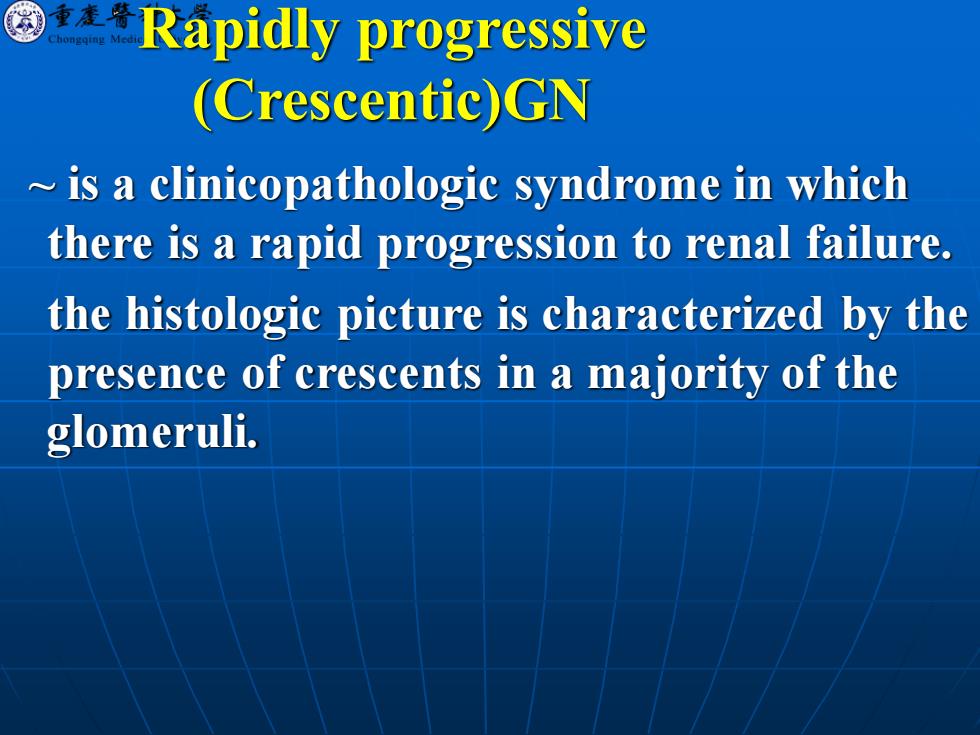
Rapidly progressive (Crescentic)GN is a clinicopathologic syndrome in which there is a rapid progression to renal failure. the histologic picture is characterized by the presence of crescents in a majority of the glomeruli
Rapidly progressive (Crescentic)GN ~ is a clinicopathologic syndrome in which there is a rapid progression to renal failure. the histologic picture is characterized by the presence of crescents in a majority of the glomeruli
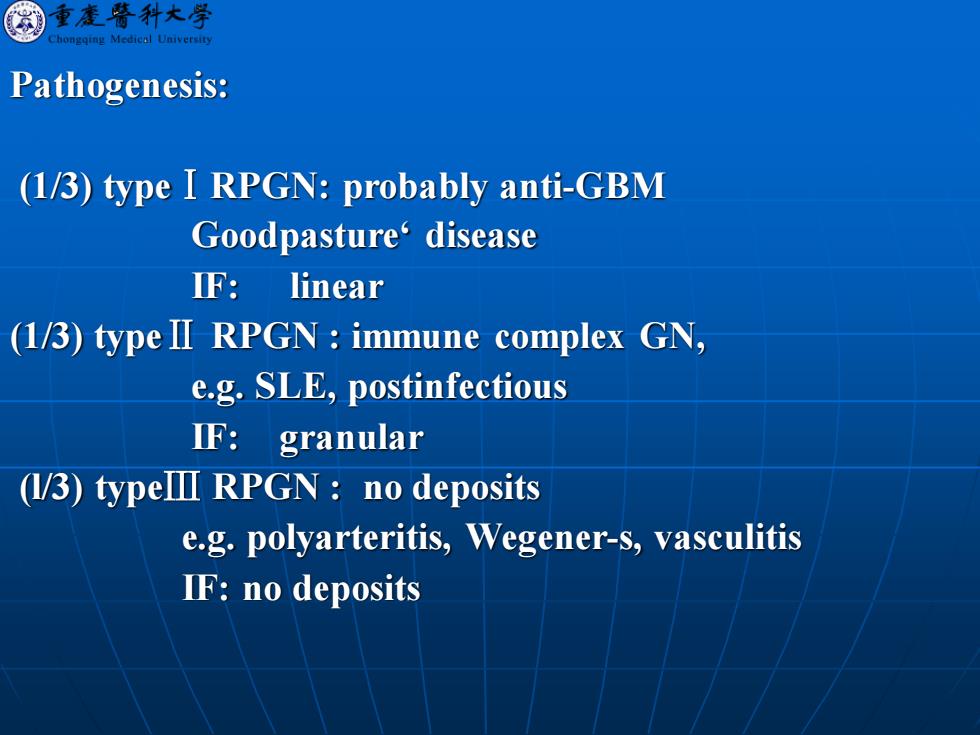
重蹇等科大学 Pathogenesis: (1/3)type I RPGN:probably anti-GBM Goodpasture'disease IF:linear (1/3)type II RPGN immune complex GN, e.g.SLE,postinfectious IF:granular (1/3)typeII RPGN:no deposits e.g.polyarteritis,Wegener-s,vasculitis IF:no deposits
Pathogenesis: (1/3) typeⅠRPGN: probably anti-GBM Goodpasture‘ disease IF: linear (1/3) typeⅡ RPGN : immune complex GN, e.g. SLE, postinfectious IF: granular (l/3) typeⅢ RPGN : no deposits e.g. polyarteritis, Wegener-s, vasculitis IF: no deposits
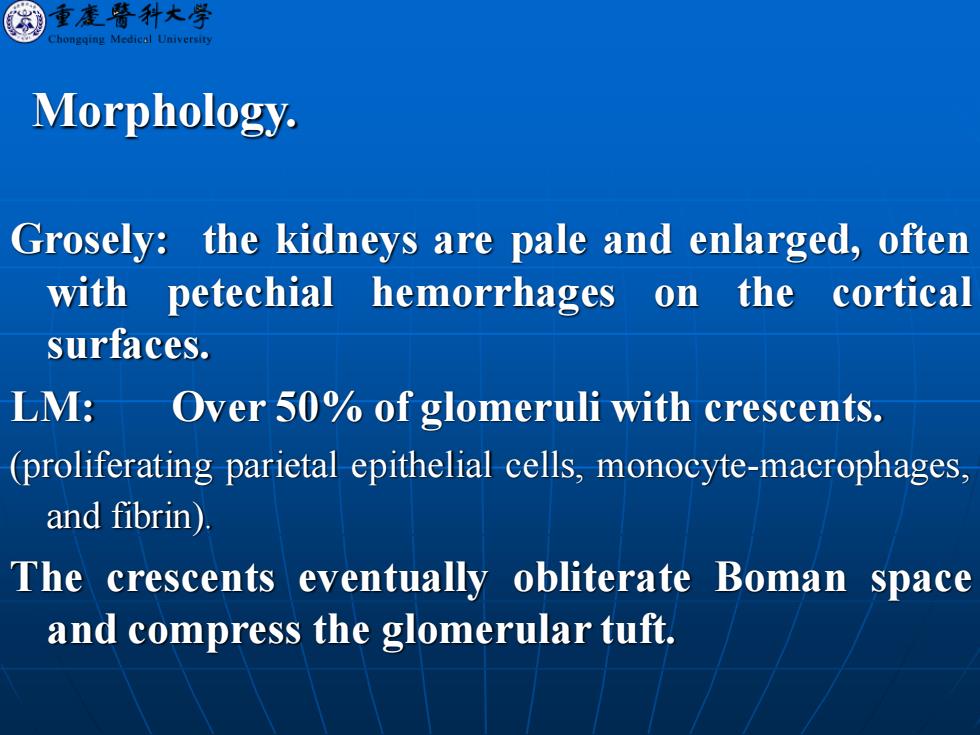
重废路科大昂 ongqing Medical University Morphology Grosely:the kidneys are pale and enlarged,often with petechial hemorrhages on the cortical surfaces. LM: Over 50%of glomeruli with crescents. (proliferating parietal epithelial cells,monocyte-macrophages, and fibrin). The crescents eventually obliterate Boman space and compress the glomerular tuft
Morphology. Grosely: the kidneys are pale and enlarged, often with petechial hemorrhages on the cortical surfaces. LM: Over 50% of glomeruli with crescents. (proliferating parietal epithelial cells, monocyte-macrophages, and fibrin). The crescents eventually obliterate Boman space and compress the glomerular tuft